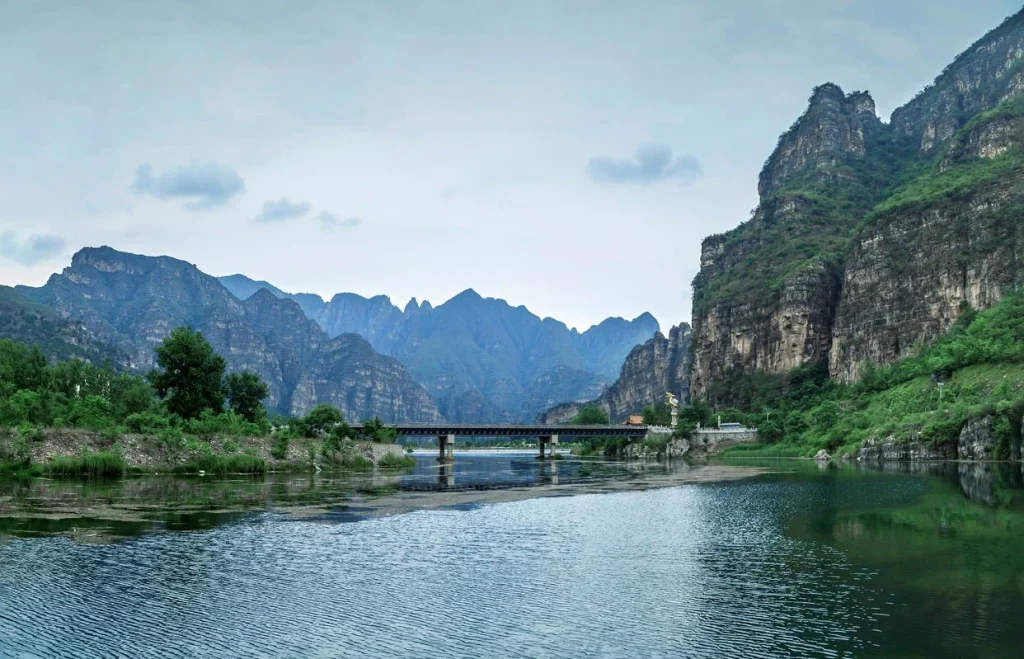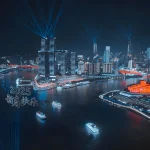Beijing City, abbreviated as “Jing” and historically known as Yanjing and Beiping, is the capital of the People’s Republic of China, a municipality directly under the central government, a national central city, and a megacity. Approved by the CPC Central Committee and the State Council, it serves as China’s political, cultural, international exchange, and technological innovation center. Recognized as one of China’s historical and cultural cities and ancient capitals, Beijing ranks among the world’s first-tier cities, with a total area of 16,410.54 square kilometers. As of October 2023, Beijing administers 16 districts. By the end of 2024, its resident population reached 21.832 million.
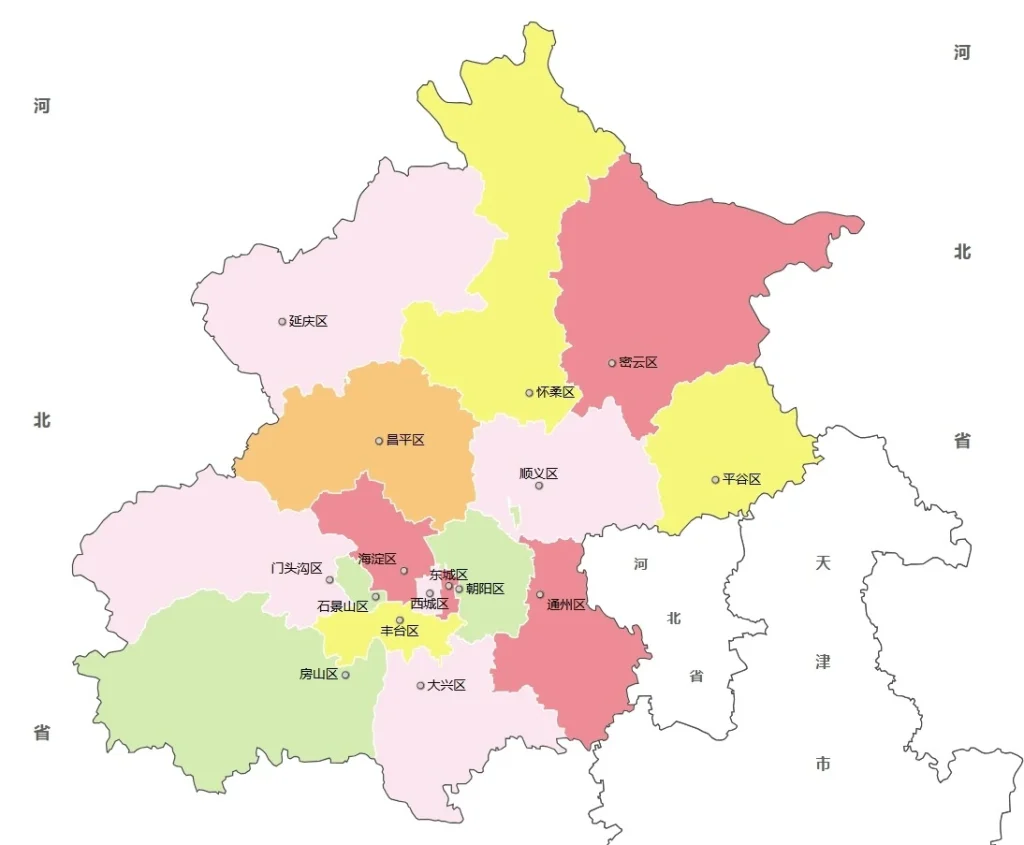
Situated in northern China, Beijing lies in the northern part of the North China Plain. It borders Tianjin to the east and Hebei Province on all other sides. The city’s center is located at 116°20′E and 39°56′N. Topographically, Beijing is high in the northwest and low in the southeast. Mountains encircle its western, northern, and northeastern edges, while the southeast gradually slopes toward the Bohai Sea, forming a vast plain. Major rivers flowing through the city include the Yongding River, Chaobai River, North Canal, and Juma River. Beijing features a warm temperate semi-humid and semi-arid monsoon climate, characterized by hot, rainy summers and cold, dry winters, with short spring and autumn seasons.
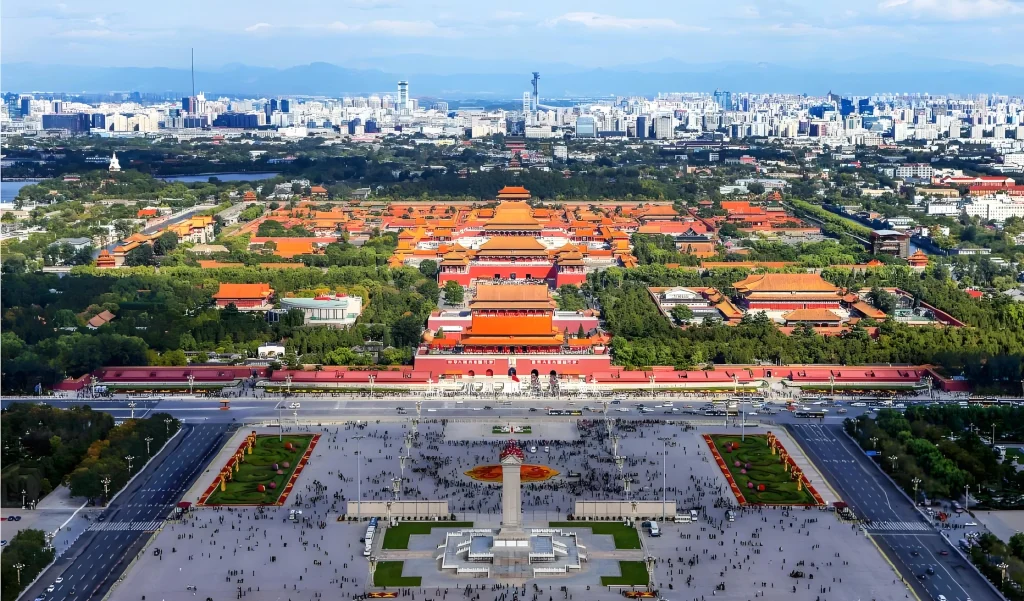
Beijing is the seat of the Central Committee of the Communist Party of China, the Central People’s Government of the People’s Republic of China, and the Standing Committee of the National People’s Congress. Having successfully hosted both the Summer and Winter Olympic Games, Beijing became the world’s first “Dual Olympic City.” As one of the birthplaces of the Chinese nation, Beijing is renowned as a historic ancient capital and a modern international metropolis. It encapsulates the essence of China’s outstanding traditional culture since the Yuan, Ming, and Qing dynasties, boasting numerous historic sites and cultural landscapes. Beijing holds the global record for the most World Cultural Heritage sites.
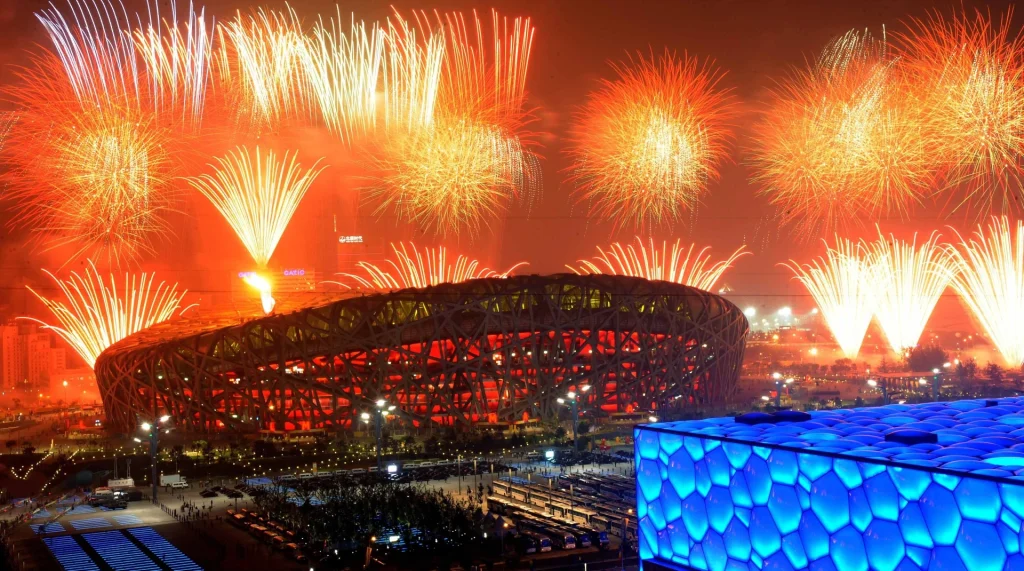
Beijing features a warm temperate semi-humid and semi-arid monsoon climate. Summers are hot with abundant rainfall, winters are cold and dry, while spring and autumn are short transitional seasons. The annual frost-free period ranges from 180 to 200 days, shorter in western mountainous areas. In 2007, the average annual precipitation reached 483.9 millimeters, ranking among the highest in North China. Precipitation distribution is highly uneven seasonally – 80% of annual rainfall concentrates in June, July, and August, with heavy rains occurring in July and August.
The city’s annual solar radiation averages 112-136 kcal/cm². Two high-value zones exist: one in Yanqing Basin and another stretching from northwestern Miyun District to eastern Huairou District, both exceeding 135 kcal/cm² annually. The low-value zone is near Xiayunling in Fangshan District, with annual radiation of 112 kcal/cm². Beijing’s mean annual sunshine duration ranges between 2,000 and 2,800 hours. Maximum values exceed 2,800 hours in Yanqing District and Gubeikou, while the minimum of 2,063 hours occurs in Xiayunling. During the rainy summer months, sunshine hours decrease to around 230 hours monthly. Autumn sees more sunshine than summer but less than spring, averaging 230-245 hours monthly. Winter has the least sunshine, with monthly hours typically between 170 and 190.
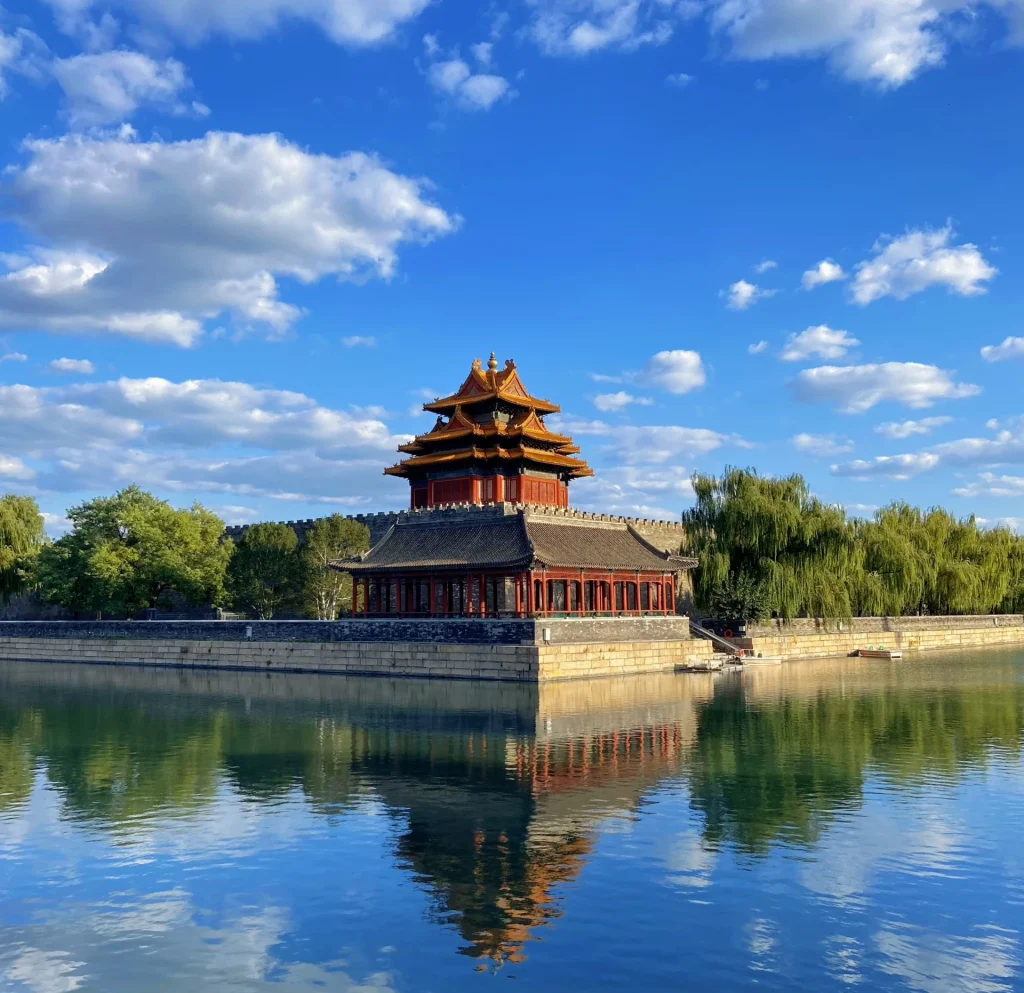
Beijing holds the world record for most World Heritage Sites (7) among all cities and is the first capital city globally to establish a UNESCO Global Geopark. The city boasts over 200 accessible tourist attractions, including iconic landmarks such as the Forbidden City—the world’s largest imperial palace, the Temple of Heaven (an ancient sacrificial altar to the gods), royal gardens like Beihai Park, the Summer Palace, and the historic Yuanmingyuan Garden (Old Summer Palace). Other renowned sites include the Badaling and Mutianyu sections of the Great Wall, as well as Prince Gong’s Mansion, recognized as the world’s largest siheyuan (traditional courtyard residence).
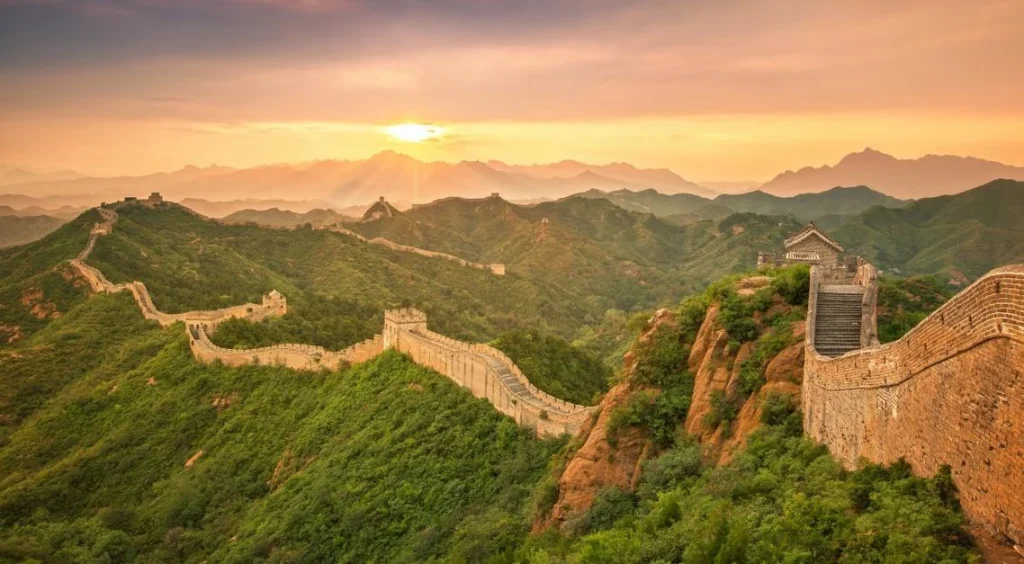
Beijing encompasses 7,309 cultural relic sites, comprising 99 National Key Cultural Relics Protection Units (including the Great Wall and Beijing section of the Grand Canal), 326 municipal-level protected heritage sites, 5 national geoparks, and 15 national forest parks. These comprehensive protections underscore the city’s profound historical and natural heritage.
Fragrant Hills Park
A National 4A-level Tourist Attraction and a Beijing Municipal Cultural Relics Protection Site, Fragrant Hills Park is located at the eastern foot of Xiaoxi Mountain in Haidian District, approximately 20 kilometers from downtown Beijing. Covering an area of about 1.7 square kilometers with a green coverage rate exceeding 95%, the park derives its name from Xianglu Peak (“Incense Burner Peak”), its main summit. During the Qing Dynasty, Emperor Qianlong constructed numerous pavilions, terraces, and halls here, creating the renowned “Twenty-Eight Scenic Spots.” In the 12th year of his reign (1747), he bestowed the name “Jingyi Garden,” ranking it among the “Three Mountains and Five Gardens” imperial parks. However, the park was devastated by Anglo-French forces in 1860 and looted by the Eight-Power Allied Forces in 1900. During the Republican era, the Shuangqing Villa was built, and the area was established as Fragrant Hills Park. From March 1949 to 1952, it served as the office site of the Central Committee of the Communist Party of China. The park officially opened to the public on May 1, 1957. Each season offers distinct landscapes, with autumn being the most enchanting. Key attractions include Biyun Temple, the Five Hundred Arhats Hall, the Diamond Throne Pagoda, Shuangqing Villa, Zhaomiao Temple, Jianxin Studio, and Cuiwei Pavilion. Between mid-October and early November (around the Chongyang Festival on the lunar calendar), the park becomes a popular destination for mountain climbing and sightseeing. The southern slopes burst with crimson maple leaves, transforming the entire mountain into a vibrant red spectacle—a renowned landscape feature of Beijing.
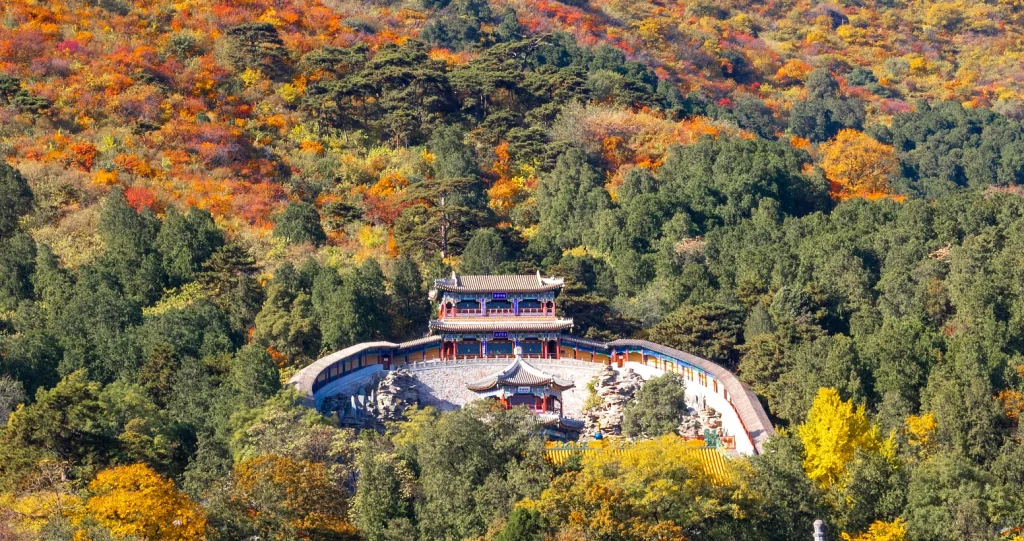
Songshan Nature Reserve
A national-level nature reserve and National 3A-level Tourist Attraction, Songshan Nature Reserve is situated in the Jundu Mountain range of the Yanshan Mountains, northwest of Yanqing District. The scenic area spans 46 square kilometers. It is home to over 180 species of vertebrate wildlife and more than 700 insect species. The reserve boasts rich flora, comprising 713 species and varieties of vascular plants across 105 families and 30 genera, including over 400 economic plant species and over 50 hectares of natural Chinese pine forests. During the Jiaqing era of the Qing Dynasty, an inscription described the area as “verdant pines and cypresses, their dark green hues stretching across the sky.” Haituo Mountain, with an elevation of 2,199.6 meters, is the second-highest peak in Beijing. Notable attractions within the reserve include Hundred Waterfalls Spring, Eight Immortals Cave, Pine Moon Pool, Lion Drinking Water, Cicada Gazing at the Moon, and Flying Cliff.
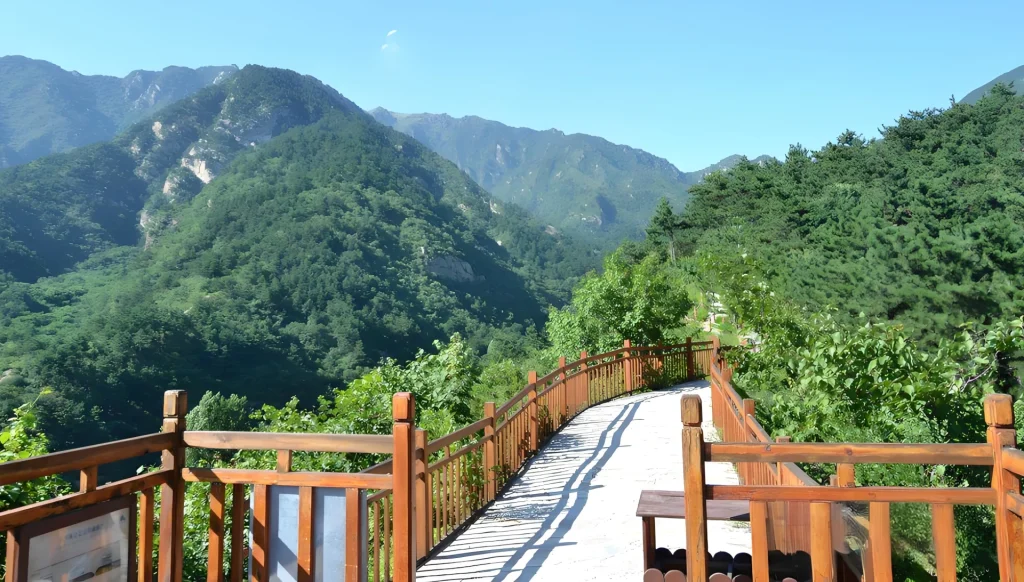
Petrified Wood National Geopark
A municipal-level nature reserve in Beijing, the Petrified Wood National Geopark is located on the banks of the Bai River in the Yanshan Mountains northeast of Yanqing District. The scenic area covers 226 square kilometers, stretching 26 kilometers from west to east (from Yanshan Heavenly Lake to Dishuihu) and 6-8 kilometers from north to south, about 100 kilometers from downtown Beijing. The forest coverage rate within the park reaches 80%, with 780 plant species and 180 vertebrate species. The annual average temperature is 8°C, and summer temperatures are 5°C lower than the urban average. Petrified wood, also known as fossilized wood, originated in the Late Middle Jurassic period approximately 140 million years ago. The discovered fossilized wood clusters in Beijing are mainly located near Xiadelongwan Village, Qianjiadian Town, Yanqing District. The upright tree stumps found in Yanqing are about 1 meter tall, with clear annual rings, and the thickest have a diameter of up to 2.5 meters. The large-scale fossilized wood clusters in Yanqing, with many standing trunks, are rare elsewhere. The fossilized wood in Xiadelongwan Village is distributed in two locations: the north bank of the Bai River and Daohuwo Mountain. The park opened in 2002 and is the only geopark in China featuring petrified wood as its main attraction.
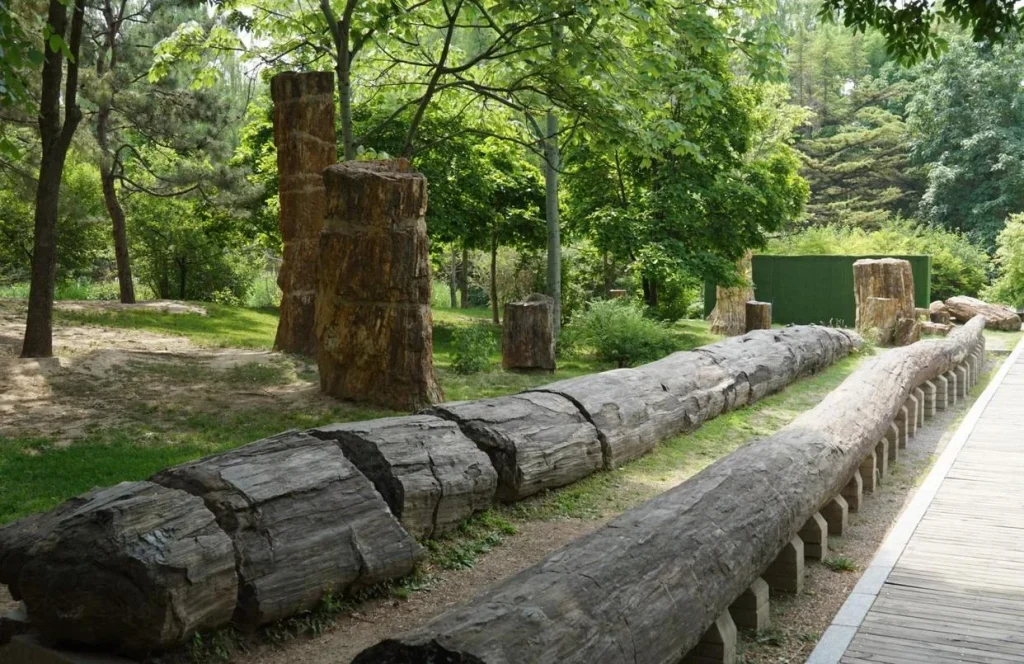
Shidu Scenic Area
A National 4A-level Tourist Attraction and National Geopark, Shidu Scenic Area is located in Shidu Town, Fangshan District, about 96 kilometers from downtown Beijing. Covering 301 square kilometers, the area is named after the ten ferry crossings required to travel upstream from Zhangfang to Shidu. It stretches about 40 kilometers from east to west and up to 25 kilometers from north to south. The scenic area features karst landforms characterized by canyons, peak clusters, and river valley landscapes, with karst features and geological remnants as its main attractions. The Juma River flows through the area from northwest to southeast, earning it the reputation of “verdant mountains, wild ferries, and a hundred-mile gallery.” Geological wonders include the thrilling “Thread of Sky,” the mystical “Flying Stone,” the peculiar “Stone-within-Stone,” and the breathtaking “Sunrise” rock formation, among 12 geological marvels. Key attractions include Juma Paradise, Donghu Port, the Pingxi Anti-Japanese Martyrs Cemetery, and the Six Heroes Tomb of Laomao Mountain. Notable landscapes include Bijiashan Mountain (Brush Holder Mountain), Shiren Peak (Stone Human Peak), and Jiulian Huashan (Nine-Face Painted Mountain). The area is rich in vegetation and wildlife, with nationally protected plants such as Qingtan (Pteroceltis tatarinowii), Juglans mandshurica, Dioscorea nipponica, and Glycine soja, as well as protected animals like the brown eared pheasant, Eurasian otter, Chinese soft-shelled turtle, and fine-scaled gudgeon. Recreational facilities offer bungee jumping, cliff diving, cable cars, rock climbing, gliding, rafting, boating, and horseback riding. The area is also renowned for over 20 local specialties, including Dahongpao pepper and Mopanshi persimmons. In recent years, the scenic area has hosted events such as the High-Platform Bungee Jumping Invitational, Folk Tourism Culture Festival, River Lantern Festival, and Shidu Mountain New Year celebrations.
